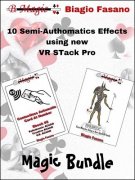Cards in Magic & Mentalism: page 66
Subtopics
Self-Working or Sleightless DIY Playing Cards Moves & Techniques ACAAN Stacks Marked Gaffed Rising & Levitating Manipulation & XCM Svengali Torn and Restored LinkingAuthors
Products
The Cross Cut Code
John Carey
Routines with the classic cross cut force.
The Cross Cut Code is devoted entirely to the classic cross cut force, with some deadly variations and packed out with some great routines which showcase them. Seven of the routines are unpublished items from John Carey and some superb material from his great friends Cameron Francis, Mike Breggar, Michael Kaminskas, Harrison Trusler, Sean Devine, Jon Racherbaumer and John Gordon.
- You and Me!
- Casino Cross Cut
- Dribble CCF!
- Carey varies Bannon
- Cross Cut Do As I Do
- Subtle CCF
- Aces A Plenty
- Crossed Biddle
- For Bannon!
- CROSSY-VOQUE
- Face- up Fake- out X- force
- Cross-Cut Nuance
- Let...
Power of Thought
John Scarne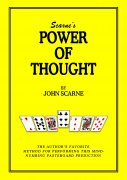
Over the years, many have (incorrectly) assumed that the "Power of Thought" effect that Scarne enjoyed performing uses the same method as the version described in the Scarne On Card Tricks book. This is not the case, as you'll be pleased to discover if you buy this ebook. This is the version Scarne himself used and (unlike the version in the mass market book), this method doesn't rely on swapping cards in your pocket. Indeed, you need not wear a jacket at all; you can perform this effect in your swim trunks if you're so inclined.
This method was originally offered by Scarne to magicians in a 1950 pre-publication...
First Call to Cards
Stewart James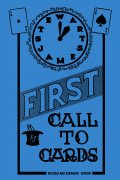
Here are twelve remarkable card tricks invented and performed by Stewart James in Canada, England and the U.S. So many magicians asked to learn these tricks that Stewart decided to reveal them for the first time in this book. Most all of his card magic is done without difficult sleights or trick cards, using subtlety instead.
CONTENTS:
MIKE AND IKE: — The famous look-alike detectives capture a gang of criminals and identify their leader. A spectator (witness) doesn't tell how the sleuths are disguised until the case is closed.
SEVEN WONDERS — No preparation is necessary to illustrate...
Cherokee's Red Moon
Renzo Grosso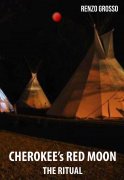
This is a close-up effect, with a history that greatly enriches the simplicity of this effect. I have a dear friend, who I knew a long time ago in Tulsa, Oklahoma: he was a park keeper; he told me about an old custom, told to him by his grandparents, to whom their grandparents had told it, and then their grandparents ... Cherokee Indians.
And the story I want to tell and create with you, is an ancient propitiatory ritual, the "Ritual of the Red Moon", in which the tribal chief, the sorcerer, and all the villagers took part. Every year, at the beginning of summer, at the time which, for...
The Astro Card File
Ken de Courcy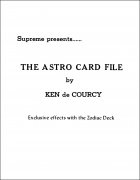
Effects with the Zodiac deck. (Deck not included with this PDF.)
Excerpt from the introduction:
Whilst this beautifully produced pack can be used for card games, as suggested in the small folder that comes with the deck, its main strength to a magician lies in the way that ordinary card tricks can be given an astrological slant and thus personalized. To the mentalist, of course, the pack represents one of the finest adjuncts to have come out for many years. Whilst a spectator may not be able to associate herself with the Queen of Hearts, she can certainly relate to her own birth sign....
MINT 1968 Annotated
Edward Marlo & Wesley James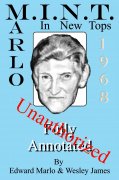
The Annotated MINT series continues. Thanks to Ed Marlo and Wesley James, MINT III, IV, V, VI, and Annotated MINT 1963 through 1967 are already available. The release of this volume, Annotated MINT 1968, takes yet another step toward the availability of the entire run of Marlo In New Tops material with Wesley's extensive annotations, and his Supplemental and Bonus additions. The material that fills this volume is both unique and exceptional. The volume includes 10 Marlo articles. It also includes 12 of Wesley's effects/routines, plus numerous added touches, and extensive Notes, as well as corrections...
Two-Speed World
Ian Baxter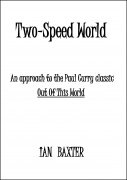
An approach to the Paul Curry classic "Out of this World".
Out Of This World, Paul Curry's timeless classic, gets a fresh look in this new manuscript from Australian card man Ian Baxter.
Years after its release, the trick retains its enduring popularity. No sleight of hand, an absence of moves demanding any form of dexterity, with attention to presentation steering the success of this baffling mystery every time. OOTW is a timeless gem. The August 1947 issue of Hugard's Magic Monthly, in a poll conducted at the time by Fred Braue, confirmed to the magic world then that this ingenious card mystery be given the mantle of the most...
The Twelve Card Problem
Scott Baird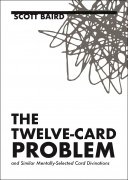
After explaining his effect 3H in his ebook More Plots and Methods (2021, p.25), Michal Kociołek writes:
Here's a little dare. I invite you, the reader, to solve this little card "problem": Perform this trick, but just with twelve cards. Once you have a method, please reach out to me as I'm very curious about your approach (unless you're reading this in 2077, then I'm definitely dead so don't bother).
This ebook contains my solutions to his challenge. The routines range from impromptu to stacked, though the majority of the effects can be done with a borrowed deck of cards and no preparation. Those...
Resistance
Joseph B.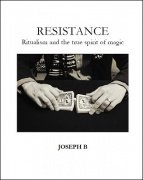
In this PDF of about 60 pages plus performance videos and some explanatory videos, you will find numerous effects and ideas that come from the creativity of Joseph B. All effects are simple to do and semi-automatic.
- Who is Joseph
- Foreword
- Glass Predictions
- Sayonara
- Drama
- Insomnia
- Impromptu Acaan
- Bite the bullet
- French Prediction
- Opening Aces
- A gift from Laura
- Paradox Location
- The Joker Know
- Fooling on the phone
1st edition 2023, PDF 67 pages.
Helicopter Card
D. Angelo Ferri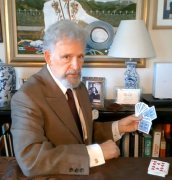
The Helicopter Card was one of Slydini's feature routines and is one of the most fascinating card routines of all time. A freely selected card mysteriously travels from the fan to the table, even though the spectator can check the cards on the table without finding his until the card invisibly flies like a helicopter to the table.
Dennis Barlotta, aka D. Angelo Ferri, studied for 8 years under Slydini. After several years of apprenticeship, Slydini was willing to teach Dennis this wonderful routine. Dennis will not only explain the mechanics and sleights but also the psychology, choreographed...
MINT 1967 Annotated
Edward Marlo & Wesley James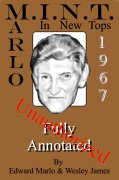
The Annotated M.I.N.T. series grows. Thanks to Ed Marlo and Wesley James, M.I.N.T III, IV, V, VI, and Annotated M.I.N.T. 1963 through 1966 are already available. The release of this volume takes another major step toward the availability of the entire run of Marlo In New Tops material with Wesley's extensive annotations, supplemental, and Bonus material. The content of this volume is notable for the range it explores. It includes eleven articles, Ed missing only in April. Three of Ed's contributions are of special note. One is pivotal to the development of Bottom Deal techniques, another is the basis...
Imagination
Mark Leveridge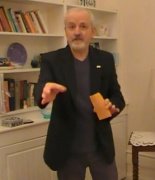
A spectator is handed an invisible deck and is asked to spread the cards and note that all the red cards are bunched together and all the black cards are assembled together. Splitting the deck so that he holds all the invisible red cards in one hand and all the blacks in the other, he hands over one half which is placed by a second spectator into the invisible cards box.
Now the cards are spread again and the spectator is asked to note that all the court cards are together, and all the spot cards are together. Splitting them into their two groups he is invited to hand either section over...
Hot Ice 3: The Kosky Cut
Ken de Courcy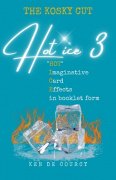
Here Ken de Courcy took a clever cut effect by Gerald Kosky, changed it, and altered it to make it completely self-contained and also impromptu. Whilst doing this, Ken hit on another use and here you are getting two for the price of one.
EFFECT:
A borrowed pack is shuffled by the owner, then the magician extracts two cards from it, hands the cards to the spectator and asks him to place them into a convenient pocket. The deck is placed on the table and the spectator is requested to cut off about two-thirds and lay it face-up alongside the remainder. He now cuts the larger packet roughly...
Hot Ice 1
Ken de Courcy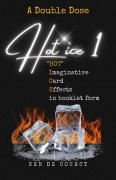
A series of novel and above all entertaining card tricks, all requiring a minimum of skill, the simplest of apparatus and all designed for the maximum entertainment and audience appeal.
No. 1. "A Double-Dose": Predestined and Black and Red Computation II.
Two effects, both using the same subtle principle, credited to Nick Trost.
PREDESTINED is for platform performances. You can use a Jumbo pack of cards and four cardboard plates. You will make this up in a few minutes and have a good program item. The working is simplicity itself but, being more interested in the presentation possibilities...
This Spud's For You
Michael P. Lair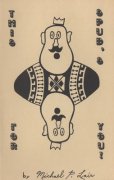
A card stab is performed using Mr. Potato Head, and his sombrero is the knife. Mr. Potato Head then doubles as the infamous mindreader, Idaho the Great. The magician is enraged when Idaho fails to name the selected card, so the magician retaliates by mashing him into the selected card. A most unusual card revelation.
You will need:
- two Mr. Potato Heads (available at most toy stores in the Preschool Section)
- two boxes of mashed potato flakes (16-oz. size)
- a razor blade
- knife
- a jumbo (5" X 7") Five of Clubs
- a regular deck of cards
- rubber cement
- a handheld potato masher
- a hand towel ...
Take Five
Michael Breggar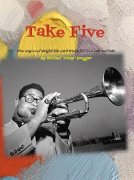
From the unsyncopated mind of Hepcat "Dizzy" Michael Breggar comes a new album of killer-diller-thriller card routines: Take Five
It's Dave Brubeck in style, Miles Davis in form, Louis Armstrong in structure, and all Michael Breggar in method and quirkiness. Mike is back with five incredible, sleight-lite masterful effects that will shake your clefs and make your audience's jaws sag while they laugh, applaud wildly, and cut a rug!
These routines are all part of Michael's current repertoire and include some that have been performed at his Magic Castle gigs.
Here's what's been waxed,...
No Delay: Think Stop
Ian Baxter
A timely favorite for any magician with a deck of cards in hand is Think-Stop. With a popularity spanning decades, this absolute classic has attracted attention from virtually every known card expert of the 20th and 21st centuries. Practical additions and/or worthwhile improvements to this gem are rare indeed. However, this brand-new handling from Australian card man Ian Baxter easily meets that challenge.
Reviewer David Jones comments:
"The Stop Trick is a stunning card effect which has traditionally depended on the use of a psychological force and hence cannot be relied upon to work...
Black Jackery
Jon Racherbaumer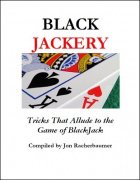
Tricks that allude to the game of BlackJack.
- Black Jack Kicker / Paul Gertner
- Blackjacked! / Don Alan & Eddie Fields
- Duck or Deal Blackjack / Nick Trost
- Black Magic / Ron Ferris
- Black Jack Versus Poker / Edward Marlo
- The Almost Perfect Blackjack Hand / Dan Block
1st edition 2023, PDF 30 pages.
Gems with Jumbo Cards
Harry Stanley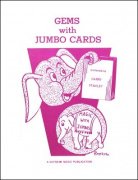
Previously titled Tricks with Jumbo Cards.
- Tricks With Jumbo Cards
- Handling The Pack
- Shuffling The Cards
- Cutting The Pack
- Forcing A Card
- The Pre-Arranged Pack
- Tricks With An Unprepared Jumbo Pack
- "Clipped" Card
- Miracle Prediction
- "Red Herring"
- 20-Card Transposition
- The Whispering Queen
- The Trio
1st edition 1959, PDF 16 pages.
MINT 1966 Annotated
Edward Marlo & Wesley James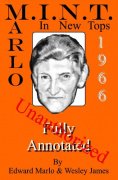
The Annotated M.I.N.T. series continues. Thanks to Ed Marlo and Wesley James, M.I.N.T III, IV, V, VI, and Annotated M.I.N.T. 1963 - 1965 are already available. The release of this volume takes yet another step toward the availability of the entire run of Marlo In New Tops material with Wesley's extensive annotations, supplemental and Bonus material. The content of this volume is exceptional in its importance. The volume includes only seven articles but three of them are of special note and one was ground breaking when it was released and remains pivotal today, more than 50 years later. This...
Devil Divination
George Blake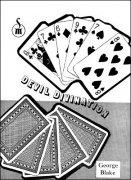
A pack is thoroughly shuffled (it may even be a borrowed one) and a spectator merely thinks of a card as they are shown to him one by one. Immediately the card is thought of, the pack is cut again and again. The spectator is given the pack, in two halves, to confirm or otherwise, that his card is there. Whether he says it is or isn't in either half, the performer knows the card immediately and may disclose it as he thinks fit.
No questions asked. If you can cut the cards you can do this. Inside two minutes you know the card the spectator is thinking of and you can build up the effect into...
Color I-Do-As-U
George L. Boston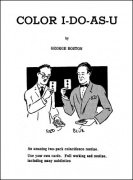
An amazing two-pack coincidence routine.
The performer exhibits two decks of cards, one red, the other blue. He picks up one deck and shows it to be quite ordinary, both back and front. He asks a spectator to assist by placing the deck face-down behind his back and cutting it any number of times, completing the cut each time then to remove two or three cards from the deck and place them in his (spectator's) pocket without looking at them.
He then requests spectator to square the pack and bring it from behind his back held in such a manner so that performer cannot get a glimpse of any card....
Controlled Coincidence
Victor Farelli
A subtle system for card workers. Four card miracles.
Excerpt from the introduction:
In the Winter of 1928, or early in the following Spring, Messrs. Bagshawe & Co. issued a catalogue entitled "New Magic," in which an item called "Card Control" appeared. Briefly, the effect was that any card (not forced) could be taken from a pack - if desired, in the performer's absence - and the performer was able always to locate in the pack a card of the same VALUE and a card of the same SUIT, as that chosen.
Being struck by the novelty of the effect I wrote to Mr. Bagshawe, requesting him to send...
